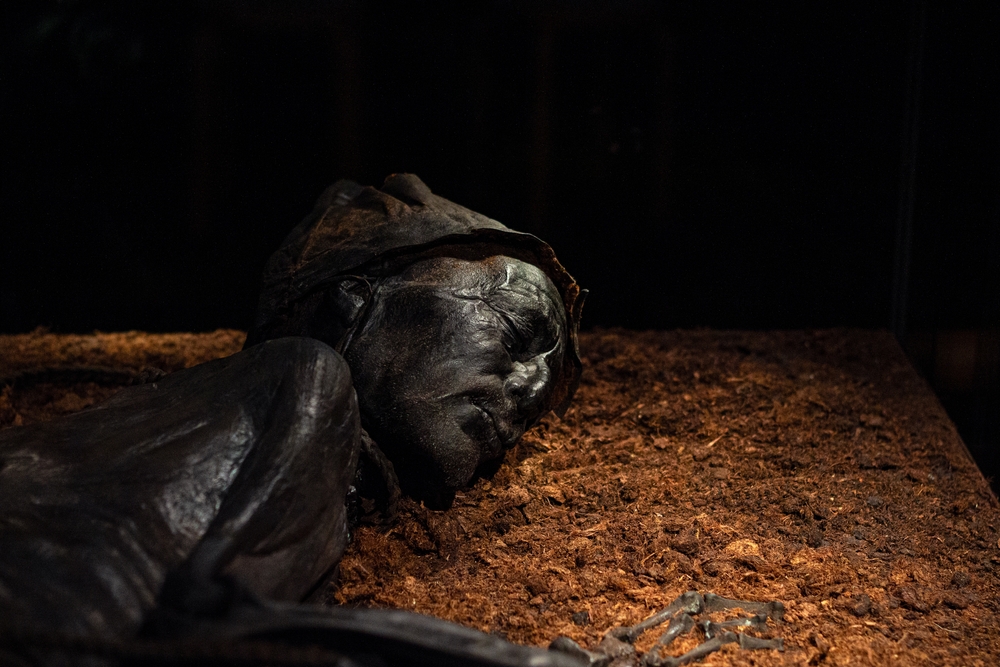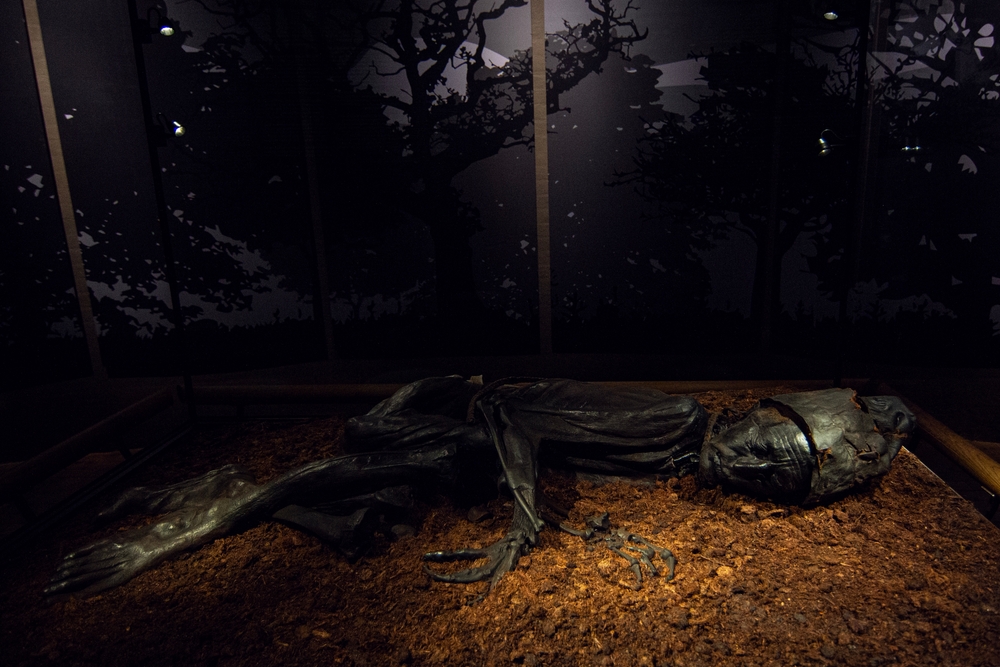Peat cutters found the corpse preserved in a bog around 12km from Silkeborg in Denmark. The corpse was so well-preserved that the cutters assumed he must have recently been murdered. However, after the corpse had been carbon dated, it was discovered to be an ancient artifact. Dubbed the Tollund Man, the corpse was found with a noose around its neck, leading to the hypothesis that he may have been the victim of a ritual sacrifice.

Source: Shutterstock
The mummified corpse belonged to a five-foot-three male who lived and died during the early Iron Age, around the fifth century BCE. The autopsy confirmed the scientists’ belief that he perished due to being hung. They further revealed that it was because of the acidity of the peat bog that the Tollund Man has been so well preserved.
The findings of the Tolluns Man study were published in July 2021 on the Cambridge University Express, an online publication. The study was led by Nina H. Nielsen, the Silkeborg Museum’s head of research, and was regarded as the most comprehensive analysis of a bog body gut ever undertaken.
The study revealed that the Tollund man consumed porridge and fish on his final day. The porridge was found to contain flax and barley. They were also able to determine that he was riddled with parasites due to the abundance of intestinal worm eggs in his gut. The researchers also noted the presence of pale persicaria seeds, which were typically removed from the grain and only included for rituals, further boosting their belief that it was indeed a ritual murder.

Credit: Pexels
Several hundred mummified corpses have been discovered preserved in peat bogs, the majority in western and northern Europe. These bogs are free of oxygen, a state that helps to prevent any decay from taking place. Bogs also contain large amounts of naturally occurring chemicals known as tannins, which preserve organic materials, such as the contents and soft tissues of the digestive tract.

Credit: Pexels
Thanks to the preserving properties of bogs, researchers have been able to uncover evidence of various types of ritualistic killings, including throats that were cut, entrails pulled out, and bones that had been broken. These bodies are usually found in places where people cut peat, and researchers must also determine whether these cuts were perhaps produced by modern peat cutters recently.

Credit: Pexels
Artifacts such as the Tollund Man reveal new facts about life from the Iron Age. Thanks to the bog environment, bodies such as the Tollund Man have been perfectly preserved, enabling researchers to constantly update their knowledge. Not only have we learned more about what they eat, but also about the complex rituals that formed an integral part of their lives. Who knows how many bog bodies are still to be discovered – and what they may still teach us about the past?

Credit: Pexels
The discovery of the Tollund Man has been a remarkable gift to our understanding of the Iron Age. The exceptional preservation of his body has allowed researchers to delve deep into the daily lives and rituals of the people who lived during that time.

Source: Shutterstock
From his last meal to the evidence of his ritualistic death, the Tollund Man continues to captivate and educate us about a fascinating era of human history. As more bog bodies are discovered, we can only imagine the wealth of knowledge that still awaits us, ready to be unearthed and explored.





